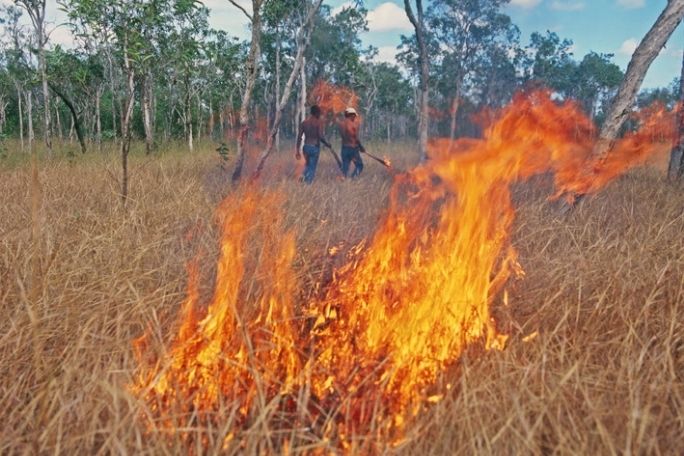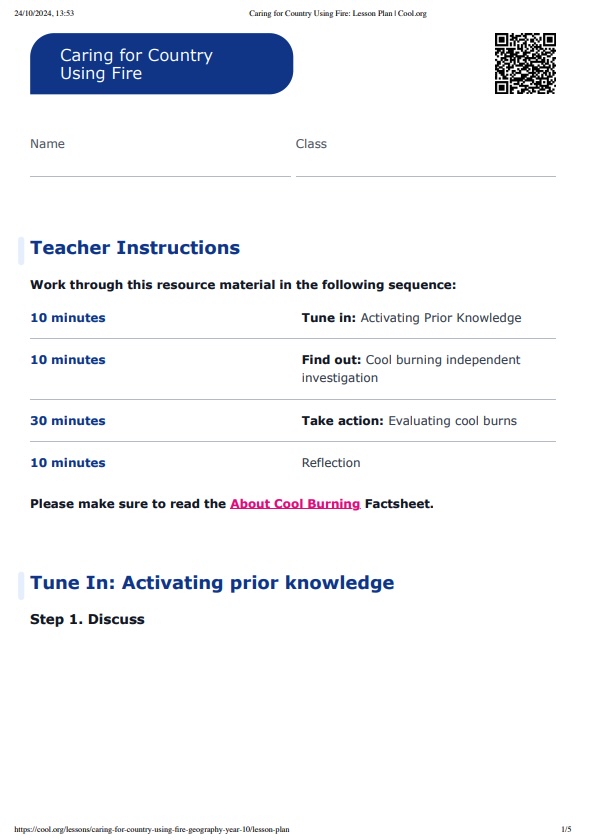Lesson summary
Students investigate Aboriginal and Torres Strait Islander peoples' traditional use of fire to manage Country.
Learning intentions:
Students will...
- identify First Nations Australians’ approaches to custodial responsibility and environmental management in different regions of Australia.
Success criteria:
Students can...
- explain how Aboriginal and Torres Strait Islander peoples use fire to manage the landscape in the savannah, and how flora interacts with this element.
Partner acknowledgement
Cool.org would like to acknowledge the support of the North Australian Indigenous Land and Sea Management Alliance Ltd (NAILSMA) in creating these resources.
Lesson guides and printables
Curriculum links
Select your curriculum from the options below.
Lesson details
Curriculum mapping
Syllabus Outcomes: AC9HG10K03
Cross Curriculum Priority: Sustainability, Aboriginal and Torres Strait Islander Histories and Cultures.
Relevant parts of Year 10 achievement standards: Students explain the effects of human activity on environments, and the effect of environments on human activity, over time. They evaluate the implications of a distribution. They evaluate the extent of interconnections occurring between people and places and environments. They analyse changes that result from these interconnections and their consequences. Students evaluate strategies to address a geographical phenomenon or challenge, using environmental, social and economic criteria.
Resources required
- Device capable of presenting a website to the class.
- Factsheet - Cool Burning Scientific Research
- Factsheet - How Do Aboriginal And Torres Strait Islander Peoples Use Fire To Manage Country?
- Student Worksheet - one copy per student.
Skills
This lesson is designed to build students’ competencies in the following skills:
- communication
- critical thinking
- cultural understanding
Additional info
Level of teacher scaffolding: Low - Support students in independent work.
This is an original Cool+ lesson.



Welcome back!
Don't have an account yet?
Log in with:
Create your free Cool.org account.
Many of our resources are free, with an option to upgrade to Cool+ for premium content.
Already have an account?
Sign up with:
By signing up you accept Cool.org's Terms and Conditions(Opens in new tab) and Privacy Policy(Opens in new tab).